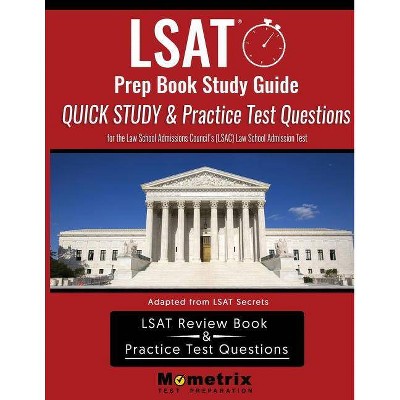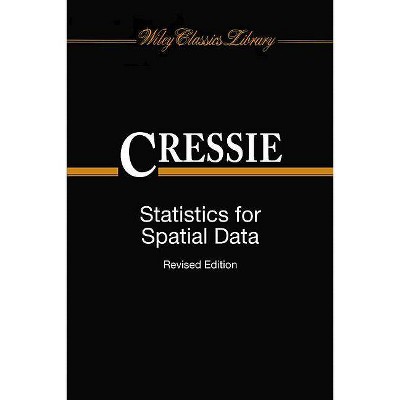Practical Analysis in One Variable - (Undergraduate Texts in Mathematics) by Donald Estep (Hardcover)

Similar Products
Products of same category from the store
AllProduct info
<p/><br></br><p><b> Book Synopsis </b></p></br></br>Background I was an eighteen-year-old freshman when I began studying analysis. I had arrived at Columbia University ready to major in physics or perhaps engineering. But my seduction into mathematics began immediately with Lipman Bers' calculus course, which stood supreme in a year of exciting classes. Then after the course was over, Professor Bers called me into his o?ce and handed me a small blue book called Principles of Mathematical Analysis by W. Rudin. He told me that if I could read this book over the summer, understandmostofit, andproveitbydoingmostoftheproblems, then I might have a career as a mathematician. So began twenty years of struggle to master the ideas in "Little Rudin. " I began because of a challenge to my ego but this shallow reason was quickly forgotten as I learned about the beauty and the power of analysis that summer. Anyone who recalls taking a "serious" mathematics course for the ?rst time will empathize with my feelings about this new world into which I fell. In school, I restlessly wandered through complex analysis, analyticnumbertheory, andpartialdi?erentialequations, beforeeventually settling in numerical analysis. But underlying all of this indecision was an ever-present and ever-growing appreciation of analysis. An appreciation thatstillsustainsmyintellectevenintheoftencynicalworldofthemodern academic professional. But developing this appreciation did not come easy to me, and the p- sentation in this book is motivated by my struggles to understand the viii Preface most basic concepts of analysis. To paraphrase J.<p/><br></br><p><b> From the Back Cover </b></p></br></br>This book attempts to place the basic ideas of real analysis and numerical analysis together in an applied setting that is both accessible and motivational to young students. The essentials of real analysis are presented in the context of a fundamental problem of applied mathematics, which is to approximate the solution of a physical model. The framework of existence, uniqueness, and methods to approximate solutions of model equations is sufficiently broad to introduce and motivate all the basic ideas of real analysis. The book includes background and review material, numerous examples, visualizations and alternate explanations of some key ideas, and a variety of exercises ranging from simple computations to analysis and estimates to computations on a computer. The book can be used in an honor calculus sequence typically taken by freshmen planning to major in engineering, mathematics, and science, or in an introductory course in rigorous real analysis offered to mathematics majors.<br>Donald Estep is Professor of Mathematics at Colorado State University. He is the author of Computational Differential Equations, with K. Eriksson, P. Hansbo and C. Johnson (Cambridge University Press 1996) and Estimating the Error of Numerical Solutions of Systems of Nonlinear Reaction-Diffusion Equations with M. Larson and R. Williams (A.M.S. Memoirs, 2000), and recently co-edited Collected Lectures on the Preservation of Stability under Discretization, with Simon Tavener (S.I.A.M., 2002), as well as numerous research articles. His research interests include computational error estimation and adaptive finite element methods, numerical solution of evolutionary problems, and computational investigation of physical models.<p/><br></br><p><b> Review Quotes </b></p></br></br><br><p>From the reviews: </p> <p>MAA ONLINE</p> <p>"I confess that when I first started reading this book I was intrigued by the new approach of real analysis but did not quite see what it might be good for. In the end, however, I was convinced that it could be a very good textbook, especially in courses taken mostly by engineering majors: I am sure these students would find the approach to the book attractive and motivating."</p> <p> </p> <p>D. Estep</p> <p><em>Practical Analysis in One Variable</em></p> <p><em>"A very good textbook, especially in courses taken mostly by engineering majors: I am sure these students would find the approach to the book attractive and motivating."--</em>MAA ONLINE</p> <p>"The author attempts to place in this book the basic ideas of real analysis and numerical analysis together in an applied setting that is both accessible and motivational to beginners. The book, not written in the widespread 'theorem-proof' style common in most mathematical textbooks, includes a lot of background and review material, numerous examples, visualizations and alternate explanations of some key ideas, and a big variety of exercises." (Peter Bundschuh, Zentralblatt MATH, Vol. 1038 (13), 2004)</p> <p>"This book comes from a live human being, not from a publisher's marketing group. ... Estep has a very radical philosophy of teaching. For each topic, he frankly tells the reader why we want to do this, why we need to do it this way, and then he actually does it! Completely, correctly, and readably! ... For the reader who wants to teach himself analysis, I can think of no better book for self study." (Reuben Hersh, SIAM Review, Vol. 45 (2), 2003)</p> <p>"Estep combines the basic ideas of real analysis and numerical analysis in an applied framework. This framework is beautifully presented in the context of a fundamental approach to applied mathematical problem solving ... . The book is written in an engaging manner ... . Background and review material and numerous examples ... are provided in a very appealing manner. Abstract concepts are carefully explained and supported with a wealth of examples and illustrations ... . Summing Up: Highly recommended." (D. E. Bentil, CHOICE, July, 2003) </p> <p>"The book contains most of the classical topics in real analysis, but they are presented in the context of approximating solutions of physical models, a fundamental problem in applied mathematics. ... I was convinced that it could be a very good text book, especially in courses taken mostly by engineering majors: I am sure these students will find the approach of the book attractive and motivating." (Mihaela Poplicher, MAA Online, July, 2003) </p> <p>"This book is intended either for an honors calculus sequence or for the first real analysis course for mathematics majors who have completed the calculus sequence. ... There is an abundance of exercises ranging from simple computations to estimates to computational projects. There is emphasis on providing explanation in solutions, and some exercises call for proofs of theorems. It should be an interesting book for either of the intended uses." (G. A. Heuer, Mathematical Reviews, 2003 h)</p> <p>"The book includes background and review material, numerous examples, visualizations and alternate explanations of some key ideas, and a variety of exercises ranging from simple computations to analysis and estimates to computations on a computer. The book is thought for an honors calculus sequence typically taken by first-year undergraduates planning to major in engineering, mathematics, and science and for an introductory course in rigorous real analysis offered to mathematics majors." (Zentralblatt für Didaktik der Mathematik, Issue 1, 2003)</p><br>
Price History
Price Archive shows prices from various stores, lets you see history and find the cheapest. There is no actual sale on the website. For all support, inquiry and suggestion messages communication@pricearchive.us




















